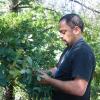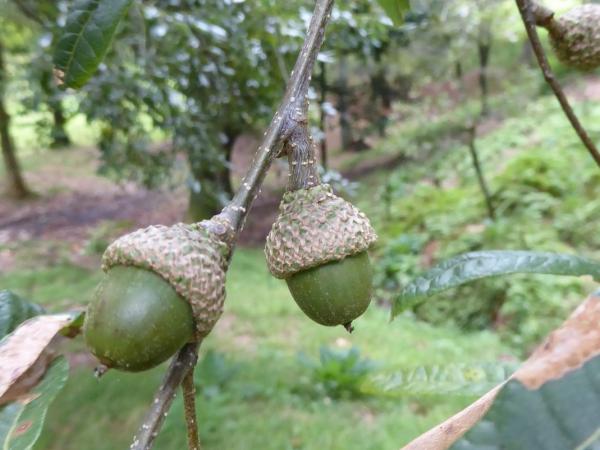Editor's Picks
Plant Focus
Climate Change Will Severely Impact the Evergreen Oaks in East Asian Evergreen Broadleaved Forests
A new study seeks to understand the impact of climate change on evergreen broadleaved forests in East Asia.
East Asian evergreen broadleaved forests (EBLFs) are global biodiversity hotspots with rich biota and a high endemic percentage. The impact of climate change to this unique ecosystem needs to be better understood. Researchers used Quercus section Cyclobalanopsis—a dominant tree lineage in EBLFs, as a proxy to simulate their distribution dynamics. The results show that the climatic niche of these oaks diversified in response to different Asian summer monsoons. Temperature mainly impacts the oaks in the western region under the Indian summer monsoon, whereas precipitation impacts the eastern species under the East Asian summer monsoon regime.

Bio_02: Mean Diurnal Range, Bio_05: Max Temperature of Warmest Month, Bio_08: Mean Temperature of Wettest Quarter, Bio_09: Mean Temperature of Driest Quarter,
Bio_15: Precipitation Seasonality, Bio_18: Precipitation of Warmest Quarter, Bio_19: Precipitation of Coldest Quarter.
Abbreviations: EC: East China, SC-Indochina: Southern China-Indochina, SWC-Him: Southwest China-Himalayas, EC-J: East China-Japan, EAW: East Asia widespread, SPA: Southern Pacific Archipelago.
The oaks in section Cyclobalanopsis showed a general northward range expansion trend in the future. The most significant range shift is for the species in the Southern Pacific Archipelago, Southern China-Indochina, and the low-elevation ravines of the Himalayas. However, only 7.56% of suitable habitat is within protected areas or nature reserves. This percentage is predicted to continue declining in the future, and highly fragmented habitats, plus intensified land use, make the natural range expansion of these oaks almost impossible. Therefore, the threatened status of these oaks with restricted distributions in Asian EBLFs might be much higher than previously estimated.


To safeguard these unique oaks and Asian EBLFs, in-situ conservation to increase the protected area coverage of the primary forests in highly suitable areas in southern China, southern Japan, northern Indochina, and south Borneo should be prioritized. The species in the Pacific insular and Indo-China region will experience a significant range shift. Therefore, ex-situ conservation to establish germplasm collection in a botanical garden network and transplanting these oaks to future suitable habitats should be a high priority to ensure the long-term survival of these unique forest trees.
For further detail, the full article can be accessed online here. Images of some of the species studied, and their habitats, follow below:






Photos © Min Deng











